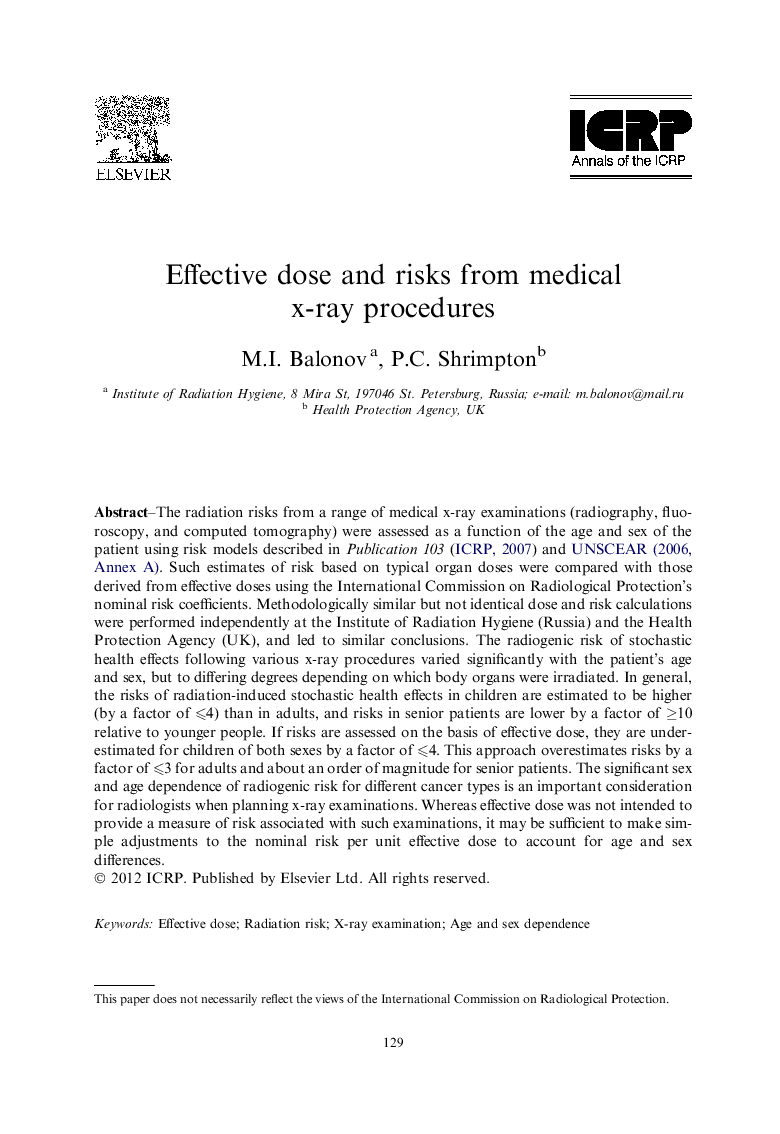| Article ID | Journal | Published Year | Pages | File Type |
|---|---|---|---|---|
| 1878532 | Annals of the ICRP | 2012 | 13 Pages |
Abstract
The radiation risks from a range of medical x-ray examinations (radiography, fluoroscopy, and computed tomography) were assessed as a function of the age and sex of the patient using risk models described in Publication 103 (ICRP, 2007) and UNSCEAR (2006, Annex A). Such estimates of risk based on typical organ doses were compared with those derived from effective doses using the International Commission on Radiological Protection's nominal risk coefficients. Methodologically similar but not identical dose and risk calculations were performed independently at the Institute of Radiation Hygiene (Russia) and the Health Protection Agency (UK), and led to similar conclusions. The radiogenic risk of stochastic health effects following various x-ray procedures varied significantly with the patient's age and sex, but to differing degrees depending on which body organs were irradiated. In general, the risks of radiation-induced stochastic health effects in children are estimated to be higher (by a factor of ⩽4) than in adults, and risks in senior patients are lower by a factor of ⩾10 relative to younger people. If risks are assessed on the basis of effective dose, they are underestimated for children of both sexes by a factor of ⩽4. This approach overestimates risks by a factor of ⩽3 for adults and about an order of magnitude for senior patients. The significant sex and age dependence of radiogenic risk for different cancer types is an important consideration for radiologists when planning x-ray examinations. Whereas effective dose was not intended to provide a measure of risk associated with such examinations, it may be sufficient to make simple adjustments to the nominal risk per unit effective dose to account for age and sex differences.
Related Topics
Physical Sciences and Engineering
Physics and Astronomy
Radiation
Authors
M.I. Balonov, P.C. Shrimpton,
